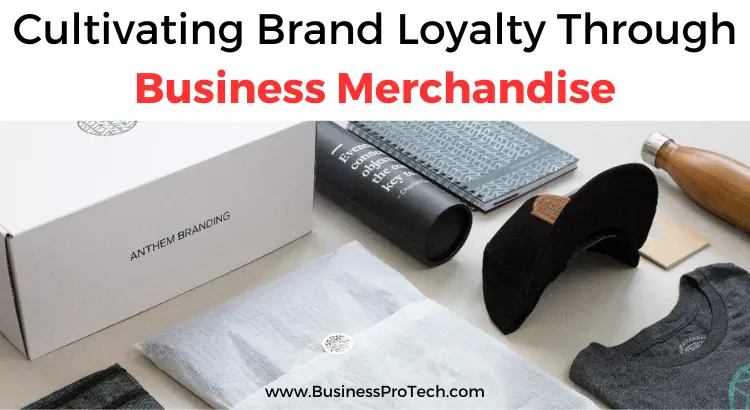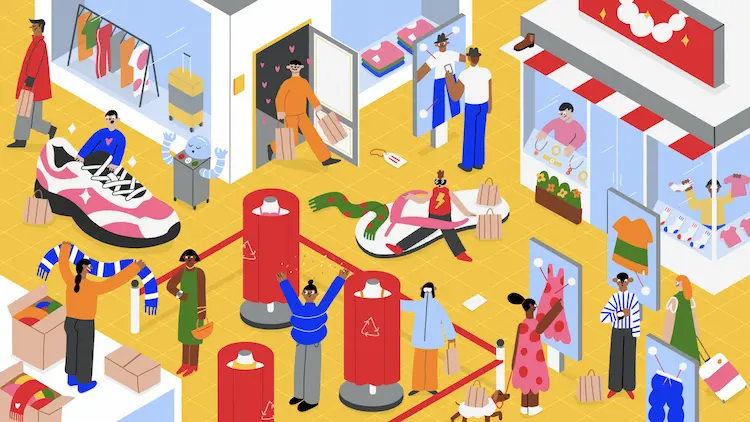Securing brand loyalty has never been more crucial in the fiercely competitive business landscape. A loyal customer base not only ensures consistent revenue but also serves as a powerful marketing tool.
But how can you turn occasional buyers into steadfast supporters? One effective method is through business merchandise.
In this article, we’ll delve into how customized goods can amplify brand attachment. Moreover, we’ll explore why brand loyalty is indispensable, the impact of thoughtfully selected merchandise, and distribution strategies. Read on.

Why Brand Loyalty Matters
Why should businesses prioritize building brand loyalty? The answer lies in the tangible advantages it offers. First, brand loyalty significantly boosts customer retention rates. Retained customers make repeat purchases, ensuring a stable revenue stream.
Second, cultivating loyalty reduces marketing costs. Loyal customers often become brand advocates. Their word-of-mouth endorsements can be more effective than expensive marketing efforts.
Lastly, brand loyalty enhances Customer Lifetime Value(CLV). When customers consistently choose your brand, they contribute more to your long-term revenue. Brand loyalty is more than just a popular concept; it’s a valuable asset with financial benefits.
The Impact of Business Merchandise
So, how does business merchandise play a role in fostering loyalty? First, it creates brand ambassadors. When a customer proudly uses or wears your merchandise, they become a walking billboard. They not only promote your brand but also vouch for its quality.
Next, merchandise helps in enhancing brand recognition. A stylish T-shirt or a functional pen bearing your logo makes your brand memorable. Over time, these items help etch your brand into the minds of both users and onlookers.
Finally, offering custom merchandise adds a personal touch to customer interactions. It goes beyond mere transactions and shows that you value their support. This emotional connection serves as a strong foundation for long-term loyalty.
Types of Business Merchandise

When selecting merchandise to boost brand loyalty, variety is key. Here are some items that appeal to various customer needs and preferences:
Apparel
T-shirts and caps are particularly effective. Not only do they offer practical use, but they also serve as wearable advertising. Imagine a customer wearing your branded T-shirt at a crowded event. This turns them into a mobile advertisement, subtly endorsing your brand.
Mugs And Water Bottles
Mugs and water bottles like 12oz enamel mugs offer utility and frequent visibility. They become part of customers’ daily routines in morning coffee or staying hydrated during workouts. Each use subtly reinforces brand recall and loyalty.
Also Read: What Makes Funny Personalised Mugs Great Promotional Items?
Office Supplies
Consider office supplies like pens and notepads. People use these daily items, making them a constant reminder of your brand. They’re also cost-effective, offering a high return on investment. When someone takes notes in a meeting using your branded pen, it increases brand visibility professionally.
Tech Gadgets
Finally, tech gadgets such as USB drives and headphones cater to a tech-savvy audience. These items are highly valued for their utility. Plus, customers who use your branded USB or listen to music through your headphones are reminded of your brand’s value.
By diversifying your merchandise options, you’ll likely hit the sweet spot for a broader range of customers. Each type has its merits, so choose those that align best with your brand and audience.
Choosing The Right Merchandise
Picking the ideal promotional goods can significantly influence your efforts to build a loyal following. Several factors come into play: alignment with your brand image, usefulness to the customer, and a focus on quality over quantity.
- Alignment With Brand Image
Think about alignment with your brand image. If you’re a fitness brand, consider offering high-quality resistance bands or gym towels. For a bookstore, bookmarks with inspirational quotes could be an excellent choice. Your merchandise should be a natural extension of what your brand represents.
- Usefulness To The Customer
Consider how valuable the item will be to the customer. If you’re a travel agency, luggage tags or travel-sized toiletry kits can offer real value, especially since travelers would appreciate and use them, enhancing your brand’s presence in their lives.
- Quality Over Quantity
Always opt for durable materials and fine craftsmanship. For example, instead of offering flimsy, disposable shopping bags, use reusable grocery bags made from sustainable materials. Quality products not only last but also elevate your brand’s perception.

The selection of the right promotional items demands a nuanced approach. Make sure they mirror your brand ethos, offer genuine utility, and reflect a high-quality standard.
Merchandise Distribution Strategies
Once you’ve picked the perfect merchandise, the next step is to get it into the hands of your customers. Your distribution strategy is crucial in this phase. Here are some examples of how you can effectively distribute your branded merchandise:
- Giveaways During Events
Consider hosting an event relevant to your industry as a venue for merchandise distribution. For instance, a meditation workshop could provide an ideal setting to distribute branded aromatherapy candles if you’re running a wellness studio. In this case, the attendees engage with your brand and walk away with a valuable keepsake.
- Online Contests
For those inclined towards digital engagement, online contests offer a compelling avenue. If you run a pet supply store, host a photo contest where customers share pictures of their pets using your products—reward winners with branded pet toys or feeding bowls.
Hosting contests creates buzz, increases social media engagement, and offers a fun way to get your merchandise to devoted customers.
- Included in Customer Purchases
Including complimentary merchandise with customer purchases also holds significant potential. For a skincare brand, inserting a branded, high-quality face towel with orders over a certain amount can create a luxury experience. This adds value to the purchase and deepens the emotional connection with your brand.
While distribution strategies for business merchandise vary in form, they are united in purpose: to put your brand in the spotlight. Thus, tailor your approach to match your brand identity and target audience.
Measuring The Effectiveness
A critical aspect often overlooked in brand loyalty initiatives is tracking the effectiveness of your merchandise strategy. Understanding impact involves metrics such as customer feedback, sales analytics, and social media mentions.
- Customer Feedback
Customer feedback serves as a direct gauge of your merchandise’s effectiveness. Use post-purchase surveys or direct customer interviews to gain insights. For a cafe offering branded reusable straws, ask patrons how often they use the straw and whether it enhances their perception of the brand.

- Sales Analytics
Sales analytics offer more quantitative data. Thus, monitor key performance indicators like repeat purchase rates or average order value before and after your merchandise campaign. If you’re a local bakery and you’ve recently offered branded aprons, check if there’s a corresponding uptick in repeat orders for your baked goods.
- Social Media Mentions
A surge in social media mentions can signal a win in customer engagement. Use social media tracking tools to monitor mentions and shares related to your merchandise. If you operate a bike shop and have distributed branded water bottles, track the number of times they appear in social media posts by users biking with them.
You can gain a comprehensive overview of your initiatives’ impact by leveraging customer feedback, sales data, and social media activity. You can continuously refine your strategy and maximize its effectiveness through this data-driven approach.
Conclusion
Business merchandise is a tangible representation of your brand, making it a potent tool for fostering customer loyalty. You can forge stronger relationships with your customer base by thoughtfully selecting merchandise that aligns with your brand image, distributing it effectively, and rigorously measuring its impact. When executed correctly, a well-planned merchandise strategy can translate into higher customer retention, reduced marketing costs, and a significant boost in brand loyalty.